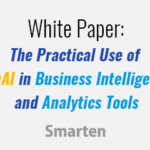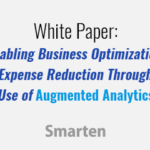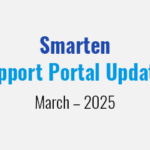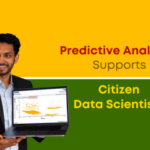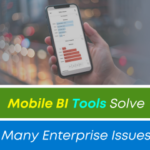
SSDP (otherwise known as self-serve data preparation) is the logical evolution of business intelligence analytical tools. With self-serve tools, data discovery and analytics tools are accessible to team members and business users across the enterprise.
What is SSDP?
SSDP or Self-Serve Data Preparation is a crucial component of Advanced Data Discovery. With self-serve data prep, data analytics moves out of the sole domain of analysts and IT and into the domain of business users. With true self-serve business intelligence and analytics solutions, the average business user can perform data preparation, test theories and hypotheses by prototyping on their own and share clear, objective data with others.
The traditional definition of data preparation describes an iterative process, typically executed by IT staff or analysts to extract and transform raw data so that the data can be used for discovery, analytics and reporting. Self-Serve Data Preparation (SSDP) allows the organization, and its users, to gather, manipulate and analyze complex data from multiple sources in a single interface with easy-to-use tools.
SSDP allows business users to leverage tools without the restrictions placed on managed dashboards or standardized reporting tools. Users can access complex tools in an easy-to-use environment without the help of programmers or data scientists. SSDP (Self-Service Data Preparation) empowers business users and allows them to perform tasks, make decisions and recommendations quickly and with speed, agility and accuracy.
Rather than preparing data at the central meta-data layer, and restricting what business users can do and see, these
IT enabled (NOT IT controlled),
self-serve data preparation and business intelligence tools and features put meaningful views of data in the hands of business users.
SSDP allows average business users to compile and prepare data and use that data in analytics to test hypotheses, visualize and share data, prepare reports and support day-to-day tasks with complete drill-down and drill-through capability, custom alerts and mobile access that supports the needs of every team member. Users can control the data elements, the volume and the timing of the analysis and reporting.
Can SSDP Truly Make Analytics Self-Serve?
The key to self-serve solutions is to provide sophisticated features and functionality in an easy-to-use, intuitive, interactive environment that users will want to adopt and leverage. By putting the power of data preparation in the hands of business users, the business can unshackle its users and make them more of an asset to the enterprise, while empowering them to find and solve day-to-day problems. SSDP can, and does make analytics self-serve, so analysts, data scientists and IT staff can focus on strategic and long-term organizational needs and provide expert advice and support as needed. In the meantime, business users have a tool that is sophisticated enough to present clear, accurate, measurable results and allow them to find the source of problems, optimize results and share data to support business decisions.
SSDP tools allow users to compile and analyze data and test theories and prototypes to support dynamic decisions and planning on their own so the business does not lose time or competitive advantage while waiting for reports or analysis from a central source.
A Gartner report published on May 24, 2016 (ID G00274731) , entitled ‘Embrace Self-Service Data Preparation Tools for Agility, but Govern to Avoid Data Chaos’, predicts that, ‘By 2018, data discovery and data management evolution will drive most organizations to augment centralized analytic architectures with decentralized approaches.’
2017 has certainly proven this to be true, as businesses embrace the value of self-serve data preparation and analytics tools.
SSDP tools integrate data from multiple data sources and make it accessible in a single, uniform, interactive view with features like smart suggestions, auto-suggested relationships, JOINs, type casts, hierarchies, data cleansing and statistical algorithms like binning, clustering, and regression for noise reduction, and trend and pattern identification. SSDP balances flexibility and agility with data governance so business users have access to the right data at the right time, and the IT team can maintain crucial security and data privacy controls and standards, as well as data quality.
Self-Serve Data Prep in Action
Perhaps the most important aspect of SSDP success is making the Self-Serve Data Prep solution simple and valuable enough to encourage business user adoption so that the enterprise can achieve and sustain ROI and TCO goals.
In a business environment where business users expect tools that are simple and powerful, SSDP can do much to advance the objectives and goals of the organization and make each business user a more valuable business resource. Self-serve tools allow users to leverage knowledge and skill and better perform against forecasts and plans.
Original Post: What is SSDP and Can it Truly Make Analytics Self-Serve?



